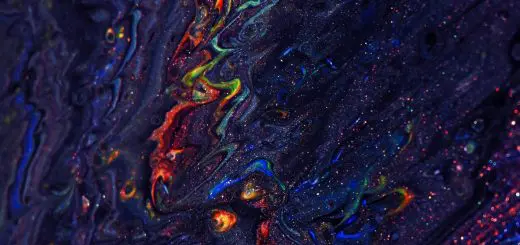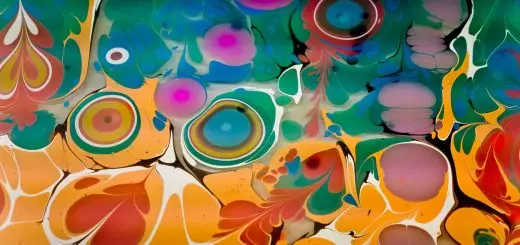The Legend of Hine-tītama: Maori Goddess of Dawn

Looking for more amazing products? Check out our online store and explore our collection here! Happy shopping!
Before diving in, please note: This post is for informational purposes only. If you’d like to know more about how we approach topics, feel free to check out our friendly Disclaimer Page.
Hey there, amazing readers! 
We’re committed to delivering quality posts, and your support (even just sticking around despite the ads) means everything to us. So, bear with us, and thanks for helping us keep the good vibes rolling. Now, on to the fun stuff!
TRANSLATE BUTTON AT THE END OF THE ARTICLE
A Brief Overview
Hine-tītama is a prominent figure in Maori mythology, revered as the Goddess of Dawn.
She plays a significant role in Maori culture and is associated with various natural phenomena.
In this article, we will delve into the origins, genealogy, and role of Hine-tītama in Maori mythology, as well as explore her symbolism and associations with other deities and beings.
We will also examine the legends featuring Hine-tītama, the rituals and offerings dedicated to her, and her influence on art and literature.
Lastly, we will discuss the contemporary understanding and worship of Hine-tītama and her lasting legacy in Maori tradition.
Introduction to Hine-tītama, the Maori Dawn Deity
Hine-tītama, also known as Hine-tītama-te-ao, is a revered deity in Maori culture.
She is associated with the dawn and is believed to bring forth the light of a new day.
As the Goddess of Dawn, Hine-tītama is often depicted as a beautiful and radiant figure, symbolizing the start of a new beginning.
Her presence is believed to bring hope, renewal, and transformation to the world.
The Origins and Genealogy of Hine-tītama
According to Maori mythology, Hine-tītama is the daughter of the primordial deities, Ranginui (Sky Father) and Papatūānuku (Earth Mother).
She is also known as the younger sister of Tāne Mahuta, the god of forests and birds, and Tangaroa, the god of the sea.
Hine-tītama’s genealogy places her in the lineage of powerful deities and highlights her divine status within Maori mythology.
Hine-tītama’s Role in Maori Mythology and Culture
Hine-tītama is an important figure in Maori mythology, and her role extends beyond being the Goddess of Dawn.
She is revered as the ancestress of humankind and is seen as the embodiment of fertility and growth.
Hine-tītama is often associated with the creation of human beings and is believed to have played a vital role in shaping the world, making her a revered deity in Maori culture.
The Symbolism and Significance of Dawn in Maori Beliefs
Dawn holds great significance in Maori beliefs, symbolizing new beginnings, enlightenment, and the transition from darkness to light.
The rising sun represents the emergence of life and the dispelling of darkness and ignorance.
As the Goddess of Dawn, Hine-tītama embodies these symbolic meanings, and her presence signifies the start of a new day filled with possibilities and opportunities.
Hine-tītama’s Relationship with Other Deities and Beings
Hine-tītama is closely connected to other deities and beings in Maori mythology.
She is often depicted as the wife of Tāne Mahuta, and together they are believed to have given birth to Hine-nui-te-pō, the goddess of death.
This relationship between Hine-tītama and Tāne Mahuta showcases the interconnectedness of various aspects of Maori mythology and highlights the cyclical nature of life and death.
Hine-tītama’s Associations with Natural Phenomena
Being the Goddess of Dawn, Hine-tītama is naturally associated with various natural phenomena.
Her radiant presence is believed to inspire the awakening of the natural world each morning.
The golden hues of the sunrise are often attributed to her influence, and the songs of birds at dawn are seen as her welcome.
Hine-tītama’s associations with natural phenomena highlight the interconnectedness between the divine and the earthly in Maori belief.
Legends and Stories Featuring Hine-tītama
Numerous legends and stories feature Hine-tītama, each showcasing different aspects of her character and role in Maori mythology.
One such legend tells of her journey through the underworld, where she seeks to bring her mother, Papatūānuku, back to the world of the living.
This demonstrates her determination and connection to the natural world.
Another legend highlights her relationship with Maui, a demigod who seeks her guidance in his quest for immortality.
These legends and stories provide insight into the significance of Hine-tītama in Maori tradition.
Rituals and Offerings Dedicated to Hine-tītama
In Maori culture, rituals and offerings are often performed to honor and show gratitude to deities, including Hine-tītama.
These rituals may involve reciting prayers, performing dances, or making offerings of food, flowers, or other symbolic items.
The purpose of these rituals is to establish a connection with the divine and seek blessings, protection, and guidance from Hine-tītama.
Hine-tītama’s Influence on Art and Literature
Hine-tītama’s presence in Maori mythology has inspired numerous artistic expressions and literary works.
Her radiant beauty and association with dawn have been depicted in carvings, paintings, and other forms of visual arts.
In literature, she serves as a muse for poets and writers, symbolizing hope, rebirth, and the eternal cycle of life.
Hine-tītama’s influence on art and literature showcases her enduring legacy and the profound impact she has had on Maori culture.
The Contemporary Understanding and Worship of Hine-tītama
In contemporary Maori culture, the worship of Hine-tītama continues to be practiced by those who seek to connect with their ancestral heritage and spiritual beliefs.
While the rituals and practices may have evolved over time, the core reverence and acknowledgment of Hine-tītama’s significance remain unchanged.
Many Maori communities still hold ceremonies and perform rituals dedicated to her, ensuring that her legacy endures in the modern world.
Conclusion: Hine-tītama’s Legacy in Maori Tradition
Hine-tītama, the Maori Goddess of Dawn, holds a significant place in Maori tradition and mythology.
Her role as the bringer of light and symbol of new beginnings resonates deeply with the Maori people.
Through her associations with natural phenomena, her relationships with other deities, and her influence on art, literature, and contemporary worship, Hine-tītama’s legacy continues to shape and inspire Maori culture.
As the Goddess of Dawn, she remains an everlasting symbol of hope, renewal, and the eternal cycle of life.

The Enlightenment Journey is a remarkable collection of writings authored by a distinguished group of experts in the fields of spirituality, new age, and esoteric knowledge.
This anthology features a diverse assembly of well-experienced authors who bring their profound insights and credible perspectives to the forefront.
Each contributor possesses a wealth of knowledge and wisdom, making them authorities in their respective domains.
Together, they offer readers a transformative journey into the realms of spiritual growth, self-discovery, and esoteric enlightenment.
The Enlightenment Journey is a testament to the collective expertise of these luminaries, providing readers with a rich tapestry of ideas and information to illuminate their spiritual path.
Our Diverse Expertise
While our primary focus is on spirituality and esotericism, we are equally passionate about exploring a wide range of other topics and niches 

To ensure we provide the most accurate and valuable insights, we collaborate with trusted experts in their respective domains 
Our blog originally focused on spirituality and metaphysics, but we’ve since expanded to cover a wide range of niches. Don’t worry—we continue to publish a lot of articles on spirituality! Frequently visit our blog to explore our diverse content and stay tuned for more insightful reads.
Hey there, amazing reader! 
Check out our store here and take a peek at some of our featured products below! Thanks for being awesome!













